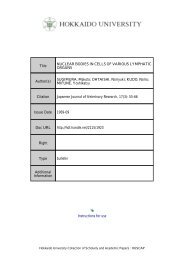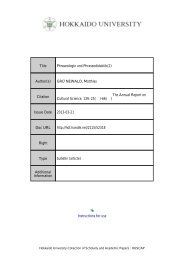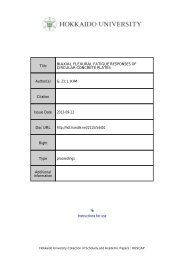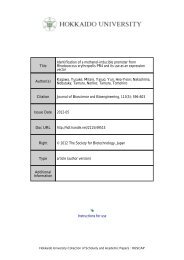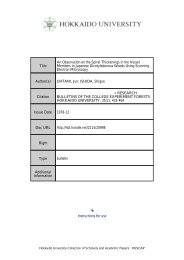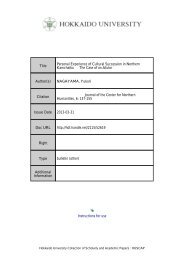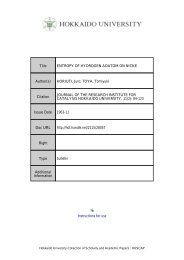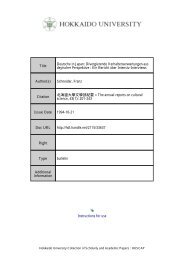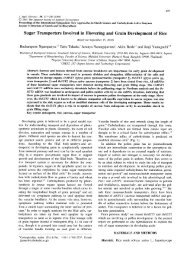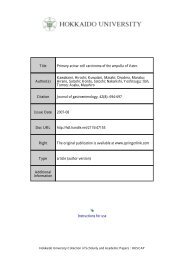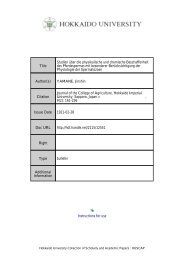ADSORPTION ISOTHERM AND THE STATES OF ADSORPTION
ADSORPTION ISOTHERM AND THE STATES OF ADSORPTION
ADSORPTION ISOTHERM AND THE STATES OF ADSORPTION
You also want an ePaper? Increase the reach of your titles
YUMPU automatically turns print PDFs into web optimized ePapers that Google loves.
160<br />
J. HORIUTI and T. Toy A<br />
plane allowed for the repulsive interaction (the crystal plane model) should in consequence<br />
reproduce the bulk of the adsorption isotherm, provided that (HO)-plane makes a good<br />
portion of the surface, whereas sites of low energy furnished by the imperfections are just<br />
a minority. At higher coverage the theoretical isotherm may fall too low, because the<br />
preference of the r-state adsorption on (HO)-plane is more or less counterbalanced by<br />
repulsion enhanced with coverage. The experimental results were satisfactorily accounted<br />
for on the base of the above crystal plane model extended to include the additional s-state<br />
adsorption on the same plane 36 • 3 7).<br />
The preferential desorption of the portion later adsorbed observed by means of isotopic<br />
tracer 13 ) was shown not exclusively to evidence the distribution function method but equally<br />
accounted for on the basis of the crystal plane model with proper allowance for the<br />
interaction.<br />
The distribution function method implying the neglect of interaction was thus concluded<br />
inapplicable, whereas the crystal plane model, extended as above, was shown in accordance<br />
with the experimental results.<br />
Introduction<br />
There are two schools of conception of the surface structure of adsorbents,<br />
from which isotherms are theoretically deduced, i. e., that of homogeneous<br />
surface with physically identical adsorption sites originating from<br />
LANGMUIR!) and that of inhomogeneous one with sites of diverse properties<br />
especially of different heat of adsorption initiated by H. S. T A YLOR 2 ). The<br />
former model has been elaborated by ROBERTS 3 ) and OKAMOTO, HORIUTI and<br />
HIROT A 4) by assigning the homogeneous surface to a crystal plane of metallic<br />
adsorbent and taking account of the repulsive interaction among adsorbates,<br />
whereas the latter has been developed into that underlying the distribution<br />
function method5 ), where the interaction was ignored or the energy of adsorbate<br />
taken particular to the site it occupied irrespective of the arrangements<br />
of other adsorbates. The former might be called the crystal plane<br />
model and the latter the distribution model in what follows.<br />
It has been observed6 ) by field emission microscope that the surface of<br />
tungsten tip consists of a single crystal, which exposes different crystal planes<br />
each big enough to ensure the physical identity of the majority of metal atoms<br />
on it. SUHRMANN71 has observed that evaporated metal film of nickel consists<br />
of single crystals of the linear dimension of ca. 100 A comparable to that<br />
on the above tungsten tip. Single crystals of the linear dimension of at least<br />
200 A are observed with reduced nickel powder8) or tungsten powder9) used<br />
ordinarily in the adsorption experiments. It might be admitted from these<br />
experimental results that the surface of these adsorbents consists of lattice<br />
planes each big enough in the above sense.




